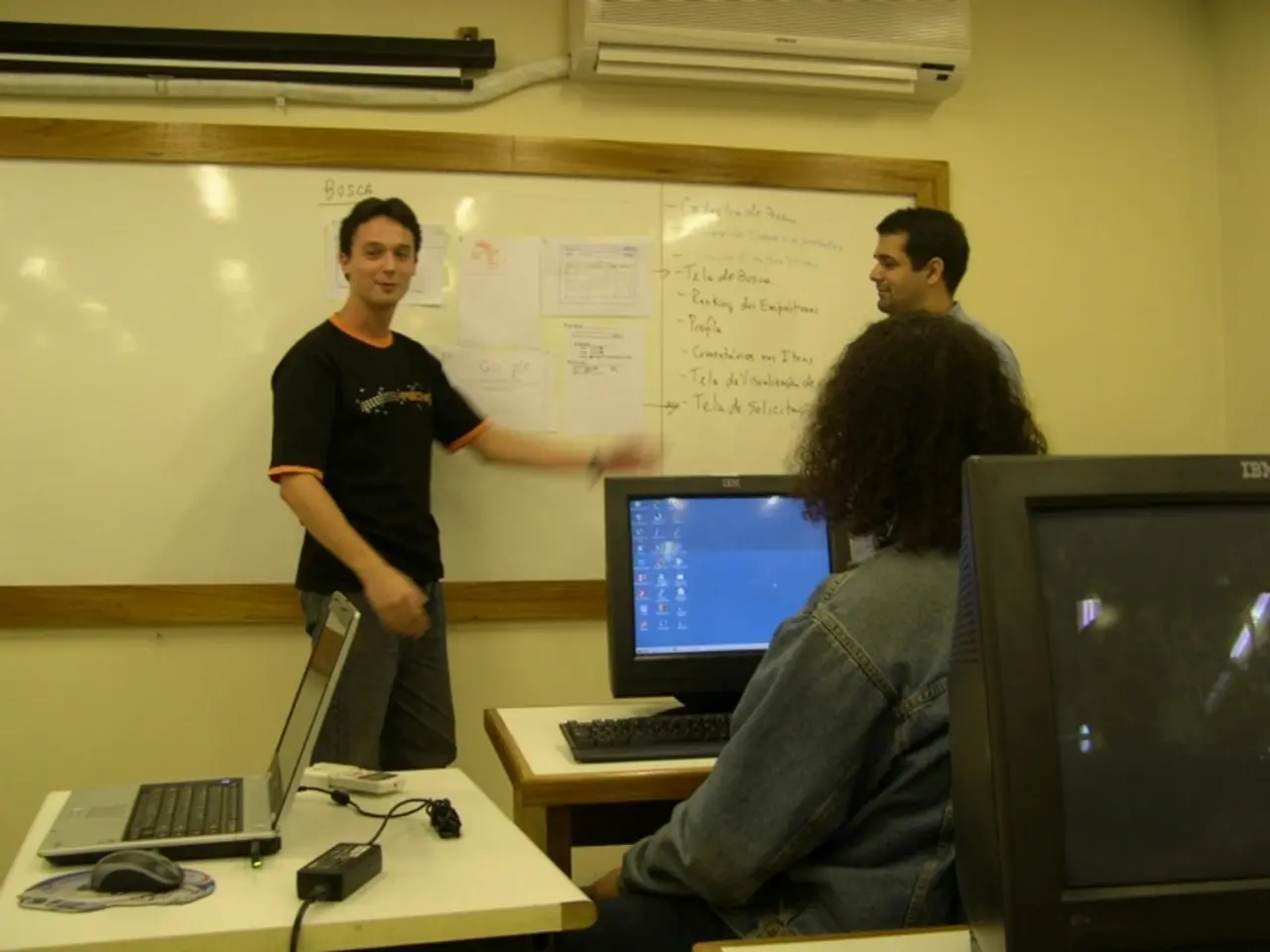Green Refrigeration Option: Solid-State Cooling as a Potential Eco-Friendly Choice
===============================================================================================
In a groundbreaking study titled "Innovation to Impact: Advancing Solid-State Cooling to Market - Challenges and opportunities for scaling breakthrough cooling startups", the Rocky Mountain Institute sheds light on the potential of solid-state cooling technologies to disrupt the global cooling market, currently valued at over $272B/yr and expected to grow to $600B by 2050.
Solid-state cooling systems, which don't operate by moving heat between reservoirs, theoretically allow them to achieve coefficient-of-performance (COP) scores above 10, almost double the COP of the best conventional AC systems. This efficiency could revolutionise the refrigeration industry, which has been dominated by vapor compression technologies for nearly a century.
Vapor compression technologies are very mature and approaching the "Carnot Limit", which describes the maximum efficiency achievable within the physics that govern the transfer of heat between a hot and cold reservoir. Solid-state coolers, on the other hand, do not operate under the same physical limitations, potentially allowing them to surpass the Carnot Limit and achieve even higher efficiencies.
The study identifies several key players in the commercialization of solid-state cooling technologies. These include MIMiC, a New York-based company developing thermoelectric solid-state systems to replace conventional packaged thermal AC units in hotels and multi-tenant buildings. Another player is Magnotherm, a Germany-based company, developing magnetocaloric refrigerators for supermarkets, grocery stores, and other retail applications.
Solid-state cooling technologies can be categorised into four main categories: Barocaloric systems, Elastocaloric systems, Magnetocaloric systems, and Thermoelectric systems. Barocaloric and Elastocaloric technologies generate cooling through the repetitive stretching or compression of materials, which can cause material fatigue, posing reliability and lifespan issues for commercial products. Thermoelectric systems take advantage of the Seebeck Effect or some other quantum phenomenon to create a temperature differential between dissimilar materials. Magnetocaloric systems use rotating magnetic fields to induce a shift in the structure of their active materials to produce a change in their temperature.
However, the path to commercialisation is not without challenges. The study addresses the technical obstacles that must be overcome before solid-state cooling technologies can be ready for wide commercialization. The key challenges include:
- Efficiency Loss in Systems Integration: Elastocaloric materials, when fully integrated into cooling systems, suffer a significant efficiency drop—up to a factor of three—compared to their standalone performance. This integration challenge limits the practical cooling power achievable.
- Material Fatigue and Durability: Both barocaloric and elastocaloric technologies rely on materials undergoing repetitive mechanical stress (stretching or compression) to produce cooling effects. This cycling can cause material fatigue, posing reliability and lifespan issues for commercial products.
- Cost Reduction and Manufacturing Scale-Up: Startups and developers must navigate a steep cost-reduction curve, requiring designs that leverage existing high-volume production technologies and components to reduce development time, mitigate supply-chain risks, and lower costs at scale.
- Supply Chain and Development Risks: Building solid-state cooling products demands careful consideration of supply chains and development strategies to ensure feasibility and scalability without excessive risk.
These challenges must be addressed to realize solid-state cooling’s promise as a greener, more efficient alternative to conventional refrigeration and air conditioning technologies. The field is attracting active investment and innovation efforts focused on overcoming these barriers to commercialization.
- The potential of solid-state cooling technologies to disrupt the global cooling market, currently valued at over $272B/yr, could lead to a significant shift in the health-and-wellness of workplaces, as more energy-efficient cooling systems may improve indoor air quality.
- The advancement in solid-state cooling technologies, such as the ones developed by MIMiC and Magnotherm, could have a positive impact on environmental-science, as they aim to reduce greenhouse gas emissions associated with traditional cooling systems.
- The study highlights the importance of data-and-cloud-computing in the field of solid-state cooling, as understanding the technical obstacles like efficiency loss in systems integration requires extensive analysis and modeling.
- To effectively combat climate-change, the development and implementation of new technologies like solid-state cooling systems require collaboration between science, technology, and business sectors, as demonstrated by the Rocky Mountain Institute's study on the subject.




